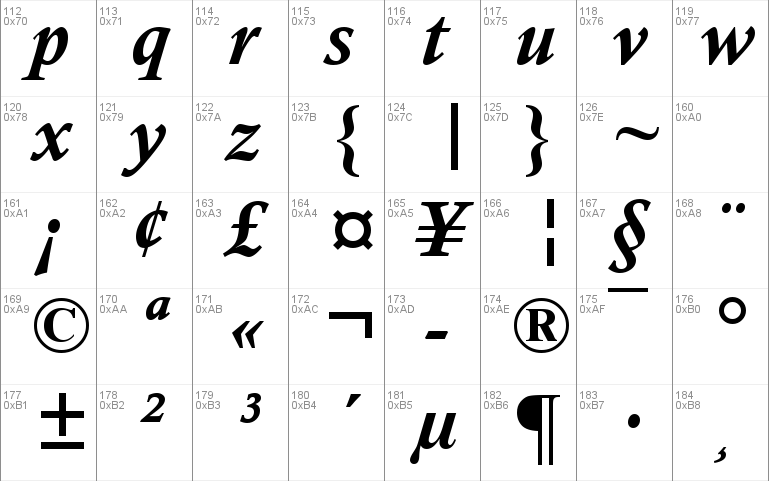

Austin was a former cutter of engraved letters who would develop a career as a punchcutter. The innovative book and newspaper publisher John Bell, impressed by the sophistication and contrast found in contemporary French typefaces cut for Firmin Didot, commissioned Austin to produce a new typeface to be sold by his British Letter Foundry. Austin's original matrices came into the possession of Stephenson Blake, and are now in the Type Museum collection in London.


As of 2017, it is used by The Daily Telegraph among others.
#CALISTO MT FONT HISTORY AND USAGE PROFESSIONAL#
īesides the digitisation of the Bell face by Monotype, an alternative professional adaptation of the Austin face in optical sizes by Paul Barnes and others under the name of "Austin" is available sold by Commercial Type. Morison praised Austin for his "exceptional technical gift" and described his Bell typeface as "surpassing all previous English and continental type-cutting in precision independence equally against Bodoni and Baskerville". Its history was studied by the historian Stanley Morison in the late 1920s and early 1930s, whose employer, the Monotype Corporation, created a 1931 revival, particularly popular for printing on high-quality paper. Īfter a short initial period of popularity, the face fell into disuse in Britain and Austin's later typefaces are quite different in style, although copies in the United States became popular around the early twentieth century with artisan printers. In italic, like Baskerville, several letters have flourishes. The figures have a number of elaborate details reminiscent of the steely calligraphy of the period, and the slight inclination of some of them led Walter Tracy to suggest that Austin was following a written example. The figures are distinctive for being at fixed height, or lining, at approximately three-quarter the height of the capitals, in contrast to earlier numerals of variable height. However, it is less severe in design, somewhat similar to the earlier Baskerville and slightly later Bulmer typefaces. The Bell typeface has a precise appearance that features stylish contrasts between thick and thin strokes and ball terminals on many letters it was influenced by the radical Didone styles of type becoming popular on the continent, in particular the work of the Didot family.
#CALISTO MT FONT HISTORY AND USAGE WINDOWS#
The bold style of Baskerville Old Face that was created by means of Windows will not be preserved on iPad.Not to be confused with the sans-serif typefaces Bell Gothic and Bell Centennial developed for AT&T, which are not related.īell is the name given to a serif typeface designed and cut in 1788 by the punchcutter Richard Austin for the British Letter Foundry, operated by publisher John Bell, and revived several times since. For example, the Calisto Bold font will be displayed correctly on an iPad. On your desktop computer, fonts in your HTML5 presentation will look just as they do in PowerPoint.ĭepending on available style variations, fonts may look different when played on an iPad. For example, Baskerville Old Face font only has the regular font variation. If there are no style variations for the font you are using, styles will be applied to texts by the means of the Windows OS. Styles can only be preserved if a font has style variations by default, like the Arial or Calisto MT font families that have regular, bold and italic font variations (see the screenshot). In this case, the styles of these fonts will not be preserved when your HTML5 presentation is played on an iPad, since iOS can’t reproduce these styles. bold, italic) for certain fonts are generated by the OS itself. When you are creating your PowerPoint presentation on Windows OS, styles (i.e.


 0 kommentar(er)
0 kommentar(er)
